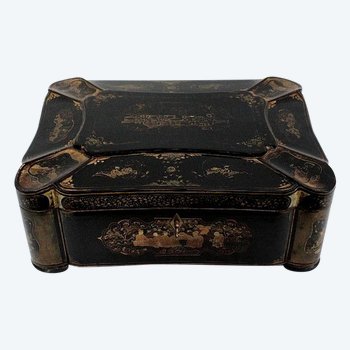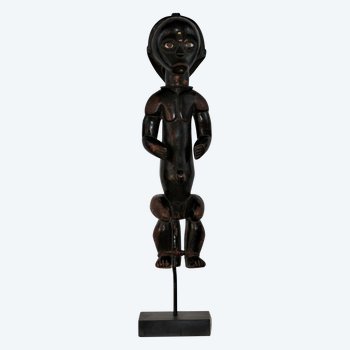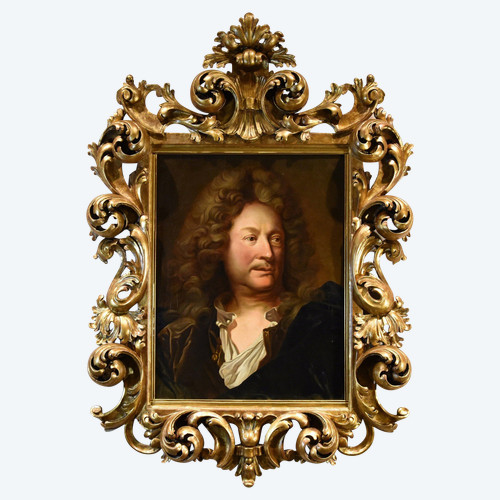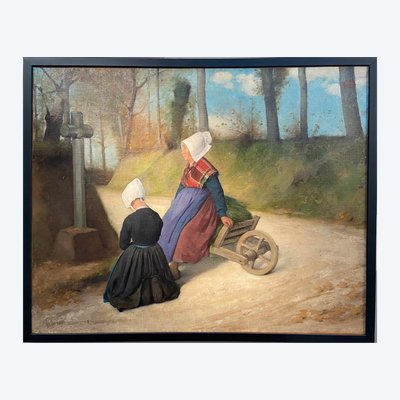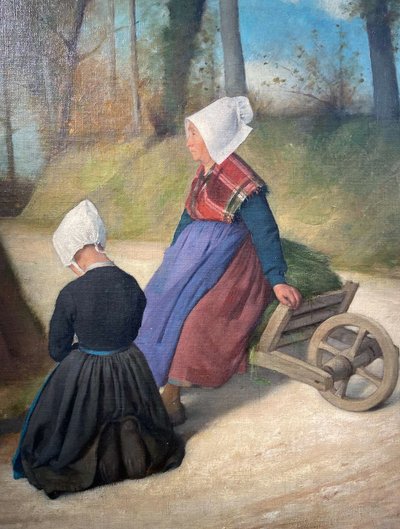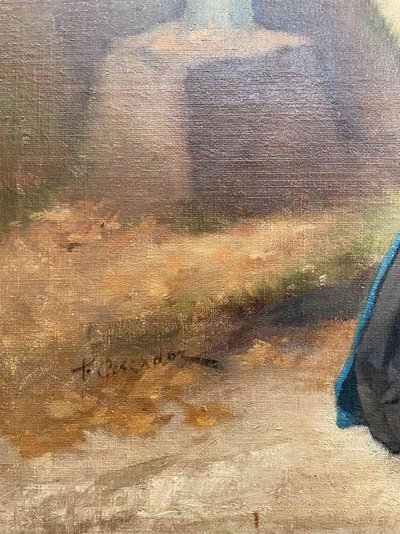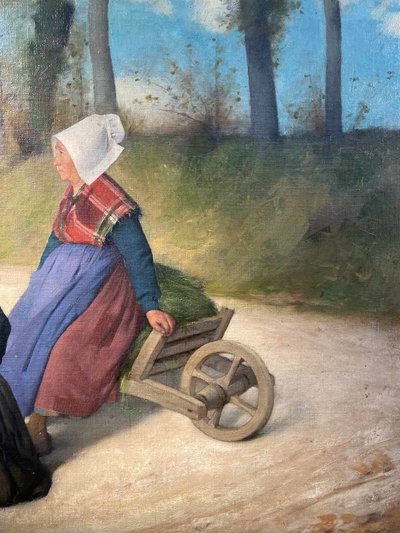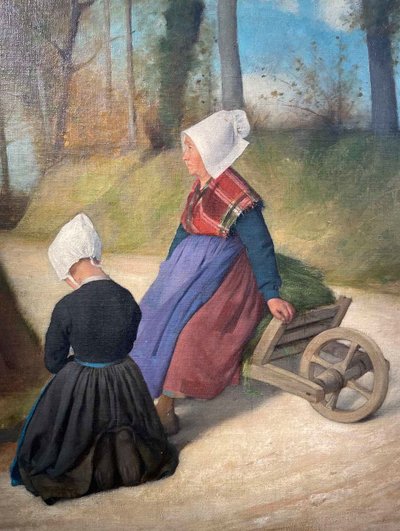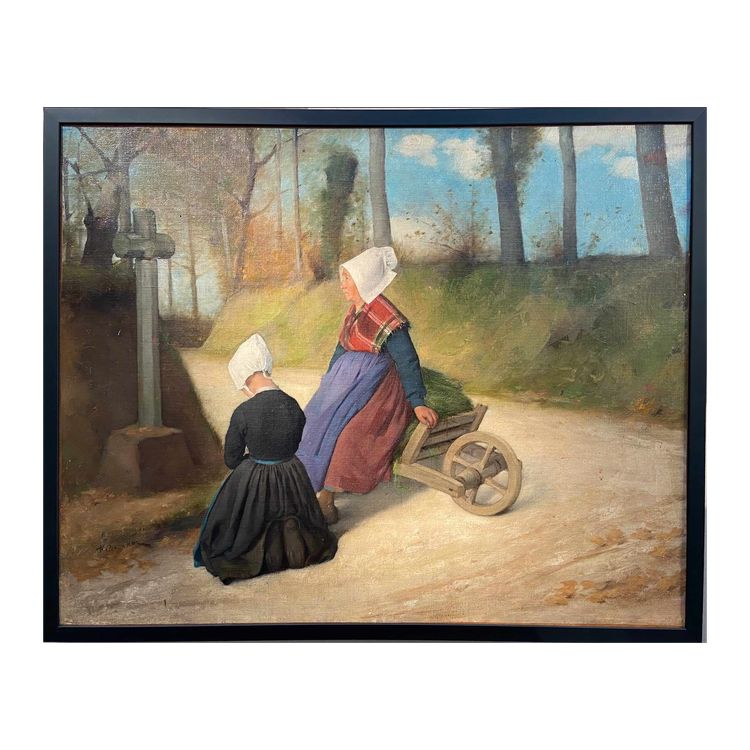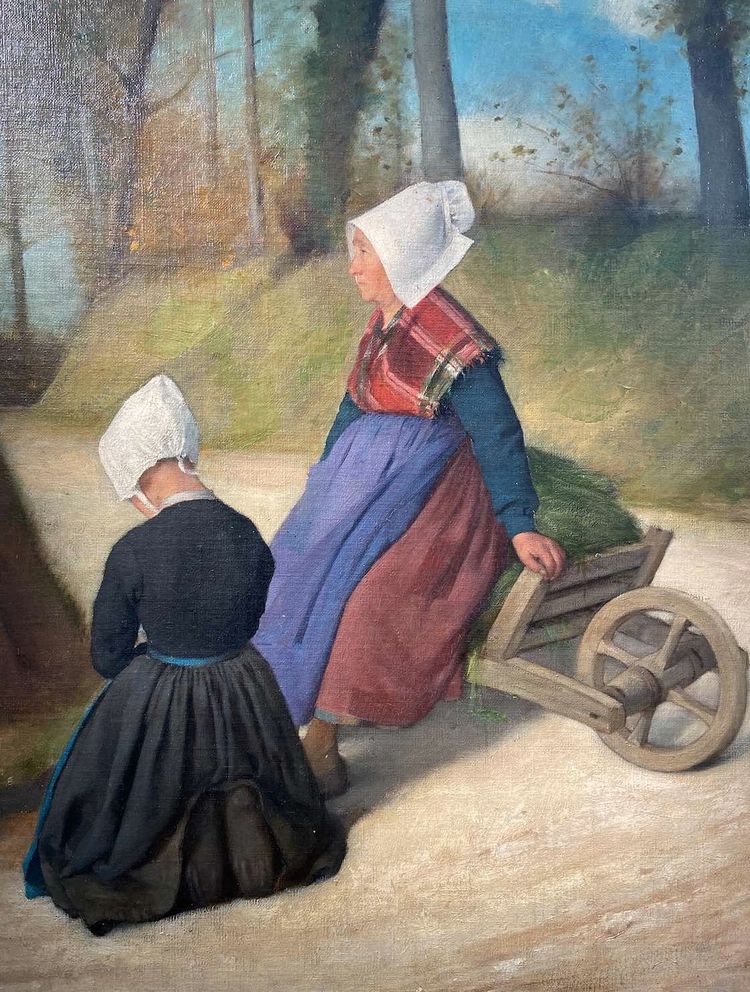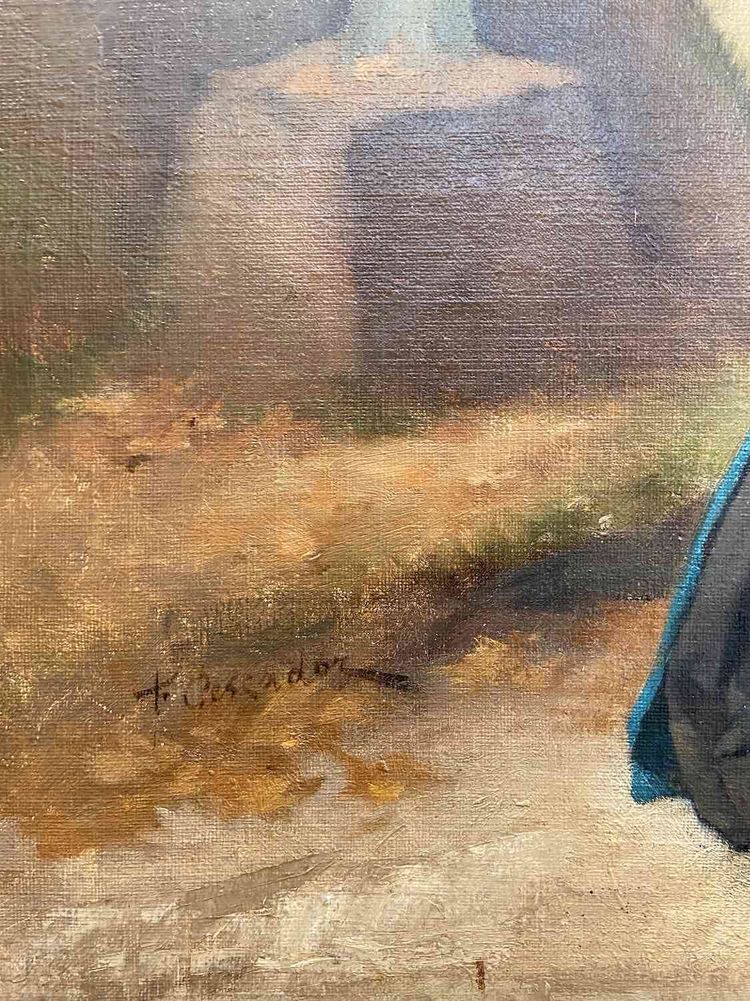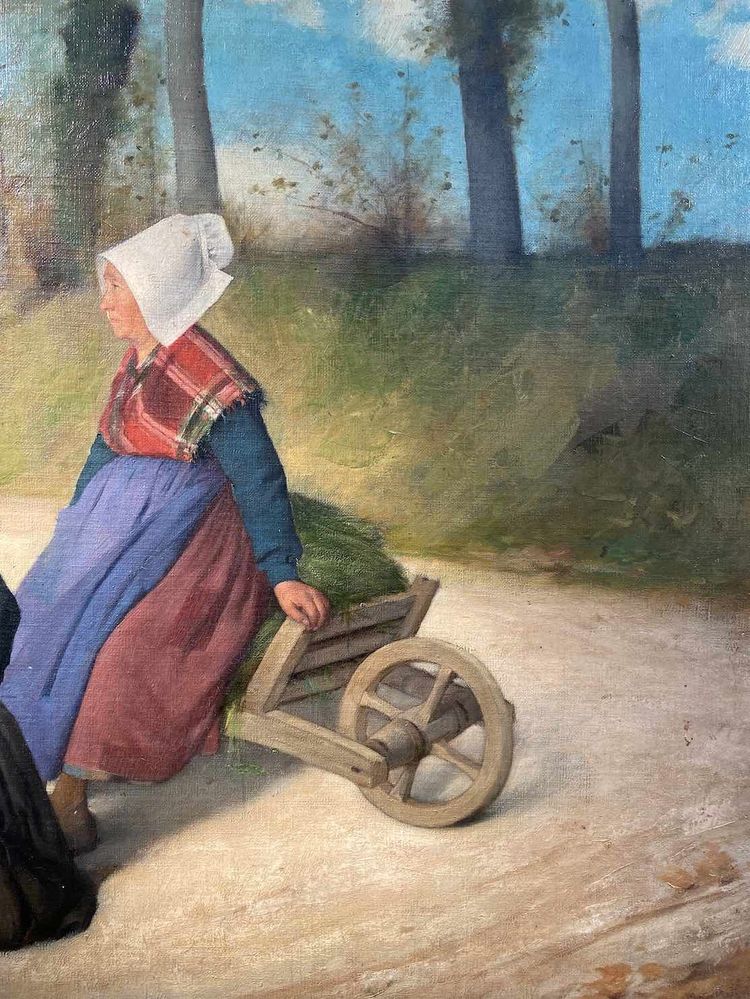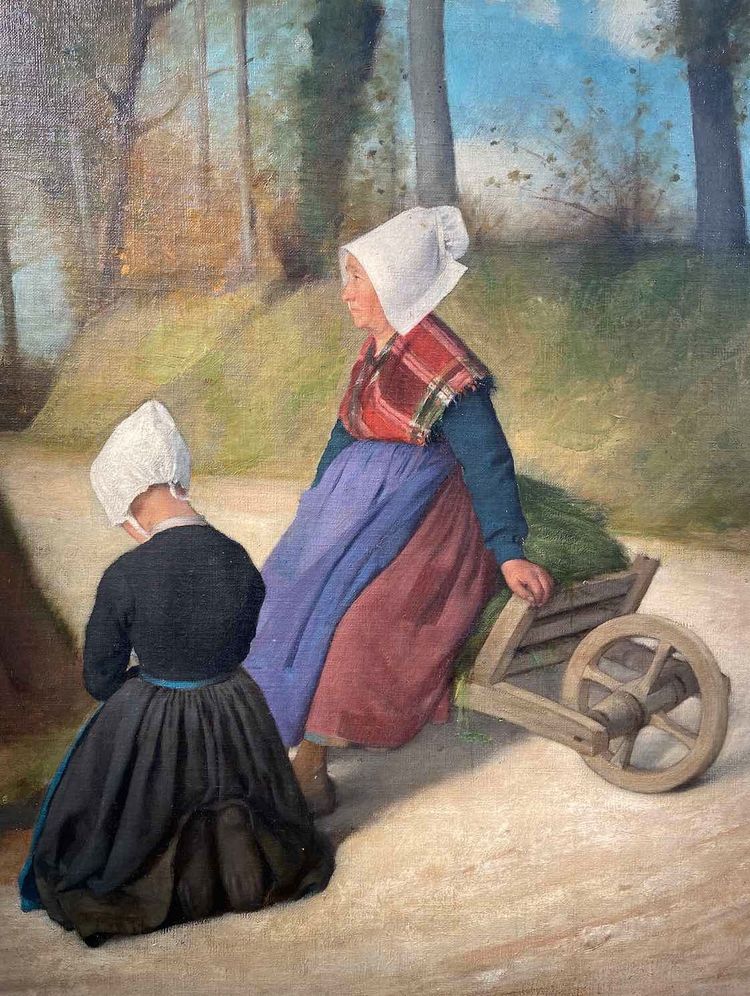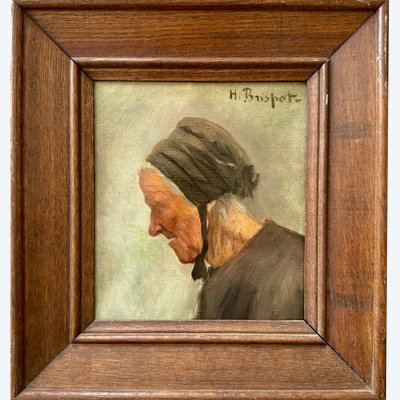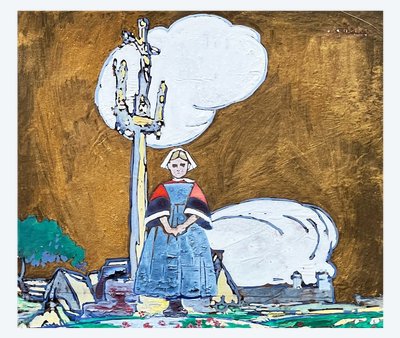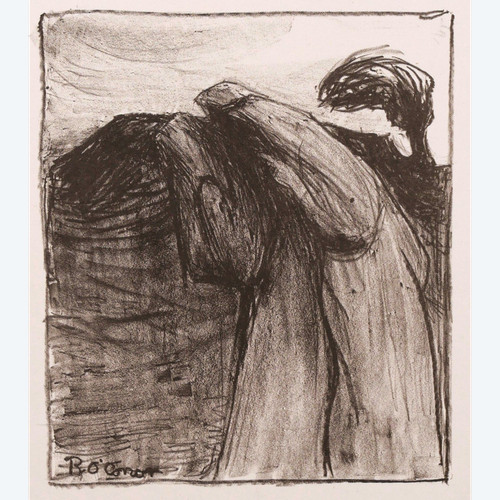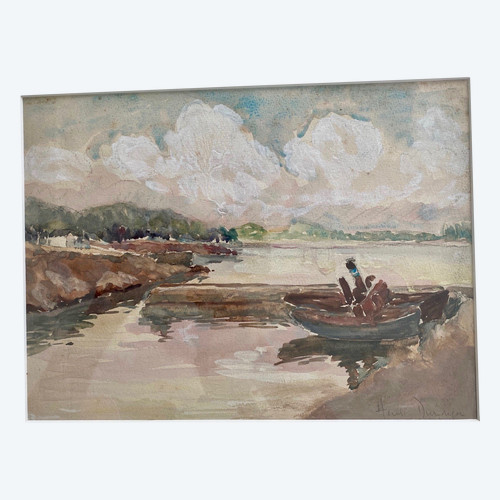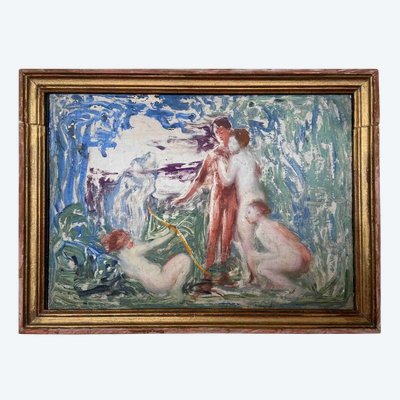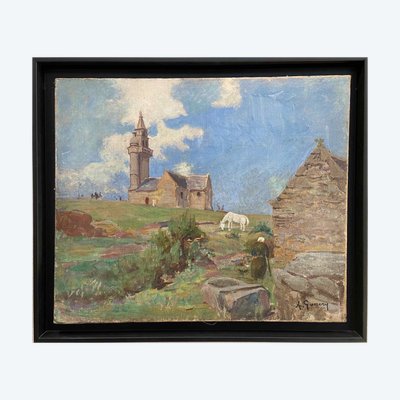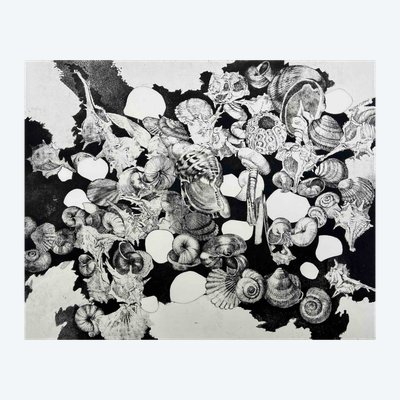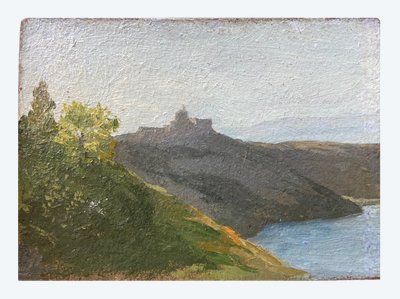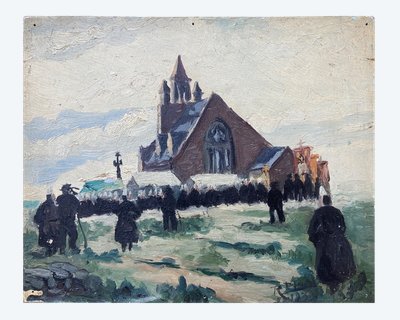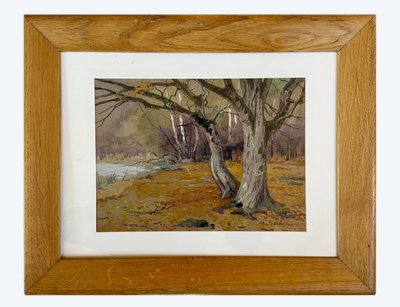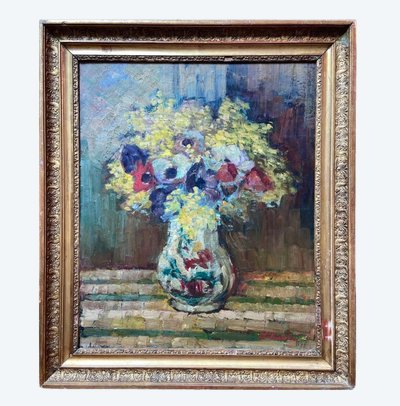This description has been translated and may not be completely accurate. Click here to see the original
Félix PESCADOR Y SALDAÑA
(Zaragoza 1836 - 1921?)
Breton Women Before the Cross
oil on canvas
65 x 81 cm
signed 'F. Pescador' lower left
Félix Pescador y Saldaña was born in 1836 into a family of artists. His father, Mariano Pescador y Escárate, was a professor at the Zaragoza School of Fine Arts, as was one of his brothers later. The latter was one of the pioneers of photography in Spain. Our artist trained at the Zaragoza and Madrid Academy of Fine Arts, then moved to Paris and became a student of Léon Bonnat. He exhibited his works at the Salon des Artistes Français between 1876 and 1900, where he notably showcased his portrait commissions, a field in which he excelled. In 1887, his painting "The Soldier's Dream," now housed at the Cognac Museum, received critical acclaim in Paris.
The work we present to you was likely executed in 1892, the year he exhibited "Breton Interior" at the Salon.
Félix Pescador seems to have experienced the same enthusiasm for Brittany as his colleagues. This unique region, with its fascinating beauty and strong identity, drew many artists to draw inspiration from it. At the end of the 19th century, Brittany became a place of artistic pilgrimage, notably for the pioneering artist Paul Gauguin, but also for Henri Rivière, Maurice Denis, Georges Lacombe, Albert Clouard, and André Dauchez.
At the bend of a dirt road bordered by high embankments, two peasant women are praying before a granite cross. The older of the two, seated on her wheelbarrow, gazes intently at it, while the younger kneels and seems absorbed in her prayer. Dressed in the peasant fashion of the time, they turn their backs to us to face the divine. Through this ethnographic painting, Félix Pescador seeks to highlight the particular importance of the Catholic religion in Brittany, regardless of age or social class.
We can compare this work to the work of Fernand Le Goût-Gérard, whose primary goal was to depict traditional life in the region through scenes of people returning from fishing or from village villages.
Ref: XAVVQFOQNP
 Louis XIV oak sacristy cabinet sideboard
1.300 € EUR
Louis XIV oak sacristy cabinet sideboard
1.300 € EUR


